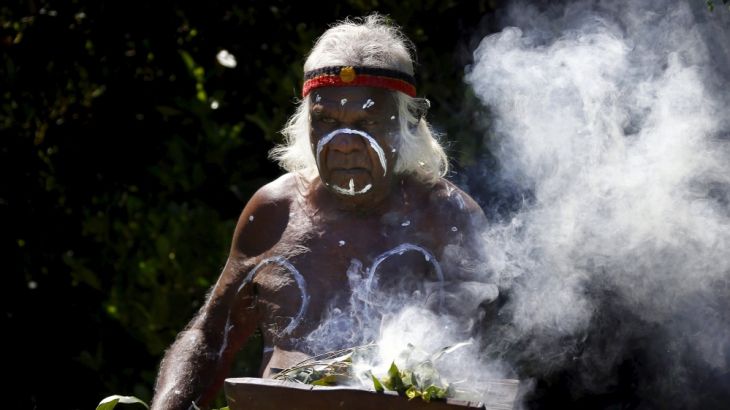Australia fails to close gap on Aboriginal disadvantage
Country fails to meet key targets to improve life expectancy, health, educational and social outcomes for Aborigines.

An Australian government report that analyses progress on tackling indigenous disadvantage shows the country is failing to meet key targets to improve the life expectancy, health, educational, social and economic outcomes of its Aboriginal and Torres Strait Islander citizens.
The 2016 Closing the Gap report, released by Prime Minister Malcolm Turnbull in parliament on Wednesday, showed positive outcomes for Aboriginal Australians still lagged well behind those of the rest of the community.
Keep reading
list of 4 itemsCurfew announced for under-18s in Australia’s Alice Springs after unrest
‘We exist’: A Himayalan hamlet, forgotten by Indian democracy
A Vision of Justice: Chile’s first blind senator
“A person’s right to shape their own identity and for that identity to be respected is central to the wellbeing of all people. And yet, for decades, Aboriginality and skin colour has been used to control the lives of indigenous people and diminish their value in society. This must be no longer,” Turnbull told parliament.
Australia’s 670,000 indigenous citizens, comprising about three percent of its population, still track near the bottom of its 23 million citizens in almost every economic and social indicator.
|
|
The Closing the Gap targets were announced in 2008 and aimed to end indigenous disadvantage within a generation.
Only two of seven targets – cutting the rate of infant mortality and getting more students to finish high school – were likely to be met, but key statistics in areas – including life expectancy, employment prospects and literacy – still fell way below expectations.
The report found a target to close a 10-year gap in life expectancy between indigenous and non-indigenous Australians by 2031 was nowhere close to being met.
Aboriginal unemployment will not be halved by 2018 as previously pledged, and the imprisonment rate for indigenous adults in Australia rose by 77 percent between 2000 and 2015.
Aborigines comprise only 3 percent of the population but make up 27 percent of those in prison.
READ MORE: Does Australia have a racism problem?
The indigenous suicide rate remained almost twice that of non-indigenous Australians between 2008 and 2012, the report found. Drug and alcohol problems also remained key problems in Aboriginal communities.
Aborigines were also still waiting to achieve recognition in their country’s constitution for their status as the first Australians.
Professor Shane Houston, deputy vice-chancellor of Indigenous Strategy and Services at the University of Sydney, told Al Jazeera’s Andrew Thomas the Closing the Gap ambitions could be too narrow.
“The good side is it draws people’s attention to what is an injustice. But it also is a risk we think only about a handful rather than the complex set of challenges that we face as a nation,” Houston said.
The prime minister stressed that working with indigenous communities across the country to develop local policies and solutions was key to bridging the gap, an approach emphasised by both supporters and critics of the yearly report.
“We have heard these words before,” Mick Gooda, the Aboriginal and Torres Strait Islander Social Justice Commissioner and the Closing the Gap campaign co-chair, told the AFP news agency.
“We take them with good heart but there’s got to be a carrying-out of that new relationship, so I think we’re entitled to be a little bit cynical about it until it starts happening.”
|
|
| Aboriginal youth at a greater risk of suicide |